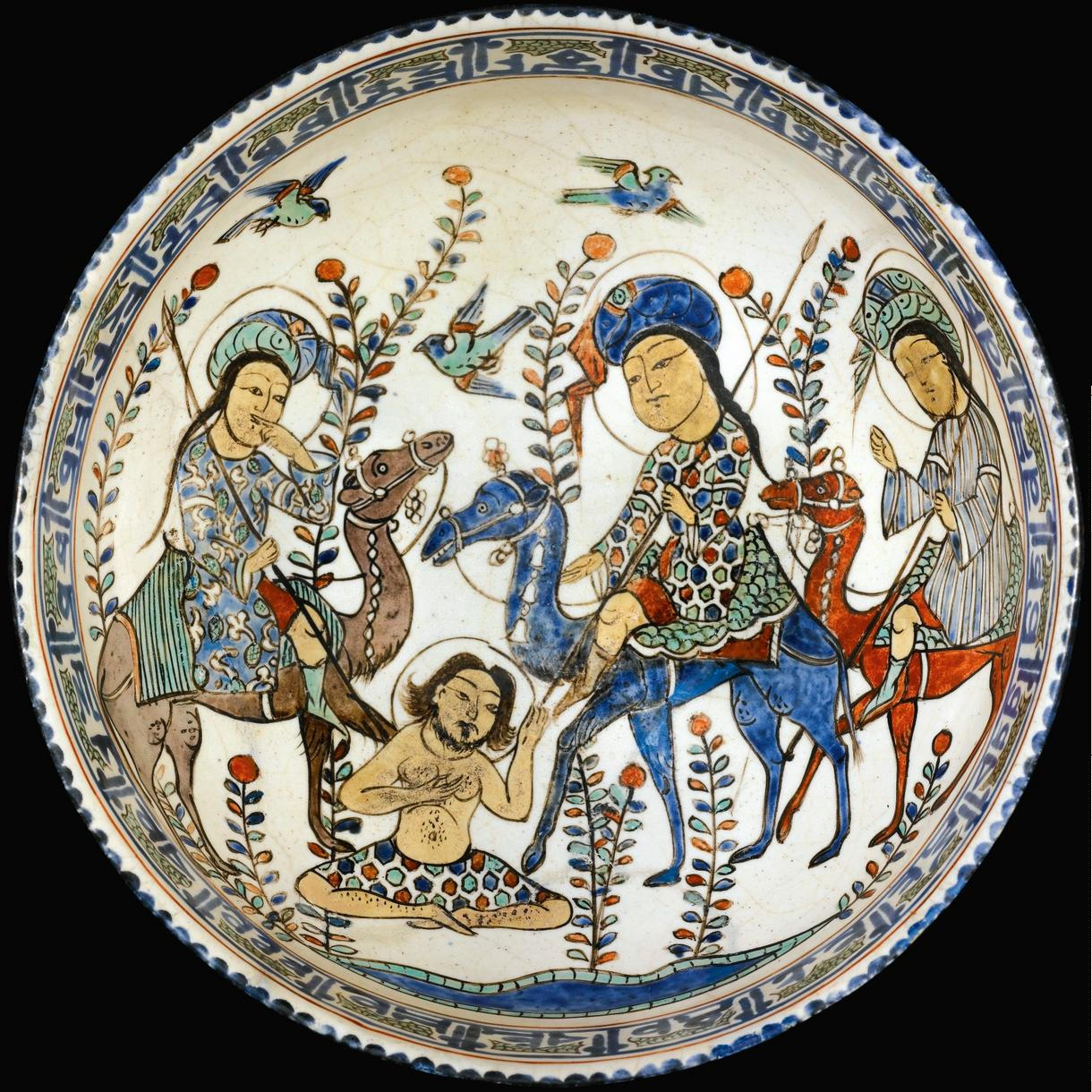
Try Amazon Audible Premium Plus and Get Up to Two Free Audiobooks
A Seljuq Bowl, Kashan, c.1220
Layla finds Majnun in the wilderness



A fine and rare Kashan minai bowl, Persia, circa 1220 AD
of rounded form with slightly everted rim on a short foot, painted in blue, green, orange, turquoise, red, beige and black in inglaze pigments and overglaze polychrome enamels on an opacified tin glaze, the interior with a depiction of Layla and two companions riding on camels chancing upon an emaciated Majnun seated cross-legged before a pool of water with birds flying overhead, the background filled with long leafy fronds, an inscription in pseudo-Kufic below the rim, the exterior with parakeets in an arcade formed by palmette cartouches with cross-hatched centres
14cm. diam.
Inscriptions: Around the rim, repetition of al-‘izz wa al-da[la] ‘Glory and wealth’ in Kufic.
This is a beautiful mina’i bowl painted with a delicacy that befits the romantic theme of its decoration. Depicted is the moment in which Layla finds Majnun in the wilderness, where he has retreated after his proposal of marriage was rejected by Layla’s father. Majnun is shown seated on the ground, bare chested, symbolic of his ascetic lifestyle during the previous months. Accompanied by two companions, Layla, in contrast, is wearing a beautiful coat and sits majestically on her camel; her look though betrays the emotion of this encounter.
It is the painterly aspect of this bowl which makes it particularly appealing and highlights the close link between mina’i decoration and painting traditions of the period. A close comparison can be drawn with the illustrations in the Varqa va Gulshah, possibly written at Konya in circa 1250 AD and painted by ‘Abd al-Mu’min al-Khuwayyi, now in the Topkapi Saray Museum. The figures and plant details in these illustrations are stylistically comparable with those on this example, notably in the rendering of the tall leafy fronds and sinuous depictions of the figures. This bowl presents a tour de force of mina’i craftsmanship and artistry, the bright colours of the enamel emphasizing the high quality of the painting.
A thermoluminescence analysis of a sample taken from the base of the bowl indicates a date of last firing of between 780 years +/- 60 years.
Sothebys, Arts Of The Islamic World, sale 2013, Lot 118